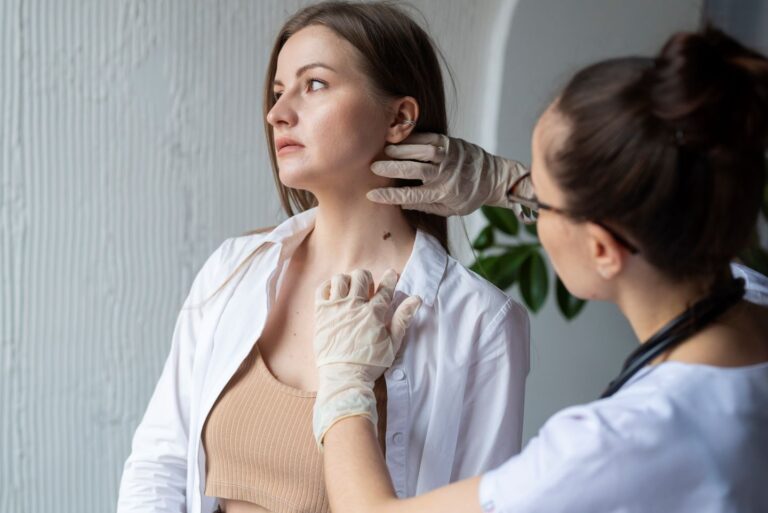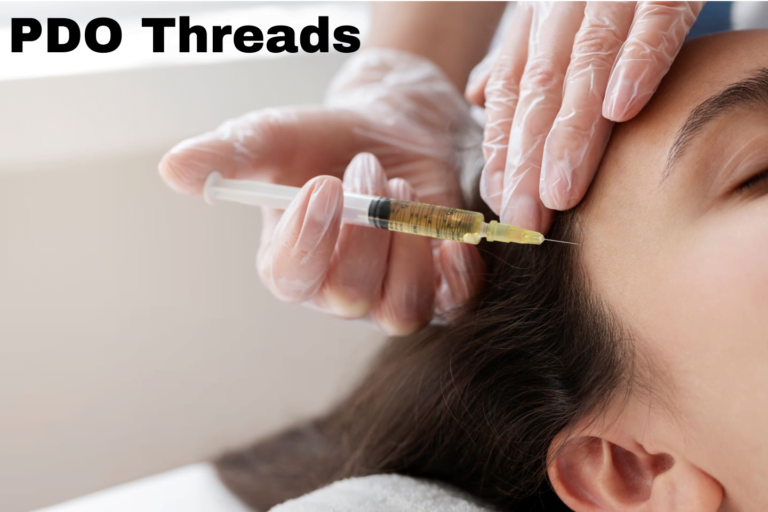Microneedling at Home: DIY Techniques and Safety Guidelines

Microneedling, once exclusive to spas and clinics, has evolved into an accessible DIY technique, captivating skincare enthusiasts worldwide. The allure lies in its transformative potential—a process where fine needles puncture the skin, stimulating collagen production and enhancing the absorption of skincare products.
The surge in popularity of at-home microneedling is fueled by its promise of smoother, rejuvenated skin without the necessity of professional appointments. However, embarking on this journey requires understanding both the techniques and crucial safety measures. Exploring these DIY methods and safety guidelines is essential for a successful and safe microneedling experience from the comfort of your home.
DIY Techniques To Get Started With Microneedling at Home
Microneedling, or derma rolling, at home involves the use of a small, handheld device equipped with fine needles that gently puncture the skin’s surface. This process triggers the skin’s natural healing response, stimulating collagen and elastin production. To embark on this skincare journey at home, here are comprehensive DIY techniques to get started with microneedling.
- Choose the Right Device
Selecting an appropriate derma roller is crucial for a safe and effective Microneedling experience. For beginners, opt for a device with fine needles, typically between 0.25mm to 0.5mm. These shorter needles are less invasive and more suitable for initial use. Ensure the derma roller is of good quality, made from stainless steel or titanium, and that it’s clean and sterilized before each use to prevent any risk of infection or skin irritation.
- Prepare Your Skin
The second step is preparing your skin. You can start by thoroughly cleansing your face with a gentle cleanser, which will remove any makeup, dirt, or impurities. After cleansing, perform a mild exfoliation to eliminate dead skin cells, allowing for better penetration of the microneedles. Avoid using harsh exfoliants or scrubs because they could irritate the skin before microneedling.
- Technique and Application
When applying the derma roller, use gentle but consistent pressure while rolling it over the skin. Ensure to cover the entire treatment area by rolling horizontally, vertically, and diagonally. Avoid applying excessive pressure, especially on sensitive areas such as around the eyes or lips. Aim for a uniform application without overstimulating any specific area.
- Post-Treatment Skincare
After microneedling, focus on post-care to support skin recovery. Firstly, you can start by applying a soothing serum or a gentle moisturizer to calm the skin. Consider using products that contain ingredients like hyaluronic acid to replenish moisture. This will aid in the skin’s healing process. Avoid using products with harsh chemicals or fragrances immediately after microneedling to prevent irritation.
- Establish a Routine
Determining the frequency of microneedling sessions is vital. Depending on your skin’s tolerance and the length of the needles used, space sessions are about two to four weeks apart. This allows adequate time for the skin to recover between treatments. Consistency in your microneedling routine can yield better and more consistent results over time while minimizing the risk of overstimulation or irritation.
By paying attention to these detailed steps, you can perform microneedling at home effectively, enhancing your skin’s texture and appearance over time. Remember, patience and consistency are key to seeing the desired improvements in your skin.
Safety Guidelines to Follow for DIY Microneedling
While microneedling can offer remarkable skin benefits, ensuring safety measures are paramount to prevent adverse effects. Here are comprehensive safety guidelines to follow when performing microneedling at home:
- Device Hygiene and Sterilization
Maintaining a clean and sterile microneedling device is essential. Do this by disinfecting the dermaroller by soaking it in 70% isopropyl alcohol. Follow this step before and after every use. Do it for at least 10 minutes. Ensure it dries completely before storage to avoid bacterial contamination.
- Skin Preparations and Sensitivity Testing
Always start with a clean face, free from makeup and dirt. Prioritize skin sensitivity by performing a patch test with the dermaroller on a small area to check for adverse reactions or heightened sensitivity. Wait 24 hours to ensure no redness, irritation, or allergic responses occur before proceeding with the full treatment.
- Needle Length Selection
Choose the appropriate needle length based on your skin concerns and tolerance. For beginners, shorter needles (0.25mm to 0.5mm) are safer as they are less invasive.
- Avoid Active Skin Conditions
Microneedling should be avoided on active acne, eczema, rosacea, or any inflamed or infected skin areas. Performing microneedling on irritated skin can exacerbate the condition, leading to increased inflammation and discomfort.
- Gentle Technique and Controlled Pressure
Adopt a gentle approach while using the derma roller. Apply controlled pressure without pressing too hard on the skin. Avoid over-rolling or excessive force, especially on delicate areas like around the eyes or lips, to prevent skin damage or bruising.
- Post-treatment skin care and Sun Protection
Opt for soothing and hydrating products to aid in skin recovery. Apply a broad-spectrum sunscreen with an SPF of at least 30 to shield your skin from UV damage as the skin becomes more sensitive post-treatment.
- Monitor Skin Reactions and Consultation
Observe your skin’s reaction after microneedling. Mild redness or slight irritation is common and usually subsides within a day or two. However, if you experience prolonged redness, swelling, severe pain, or any concerning symptoms, seek medical advice promptly.
- Consistent Needle Replacement
Regularly replace the microneedling device as per manufacturer recommendations or when the needles start to dull or show signs of wear and tear.
- Professional Consultation for Concerns
If you have any skin conditions, are pregnant, or tend to scar easily, it’s wise to chat with a skin expert before trying microneedling at home. Their advice can ensure you choose the safest approach for your skin. By adhering to these safety guidelines, you can minimize potential risks associated with DIY microneedling, ensuring a safer and more effective skincare routine at home.
Conclusion
These are all the techniques and safety guidelines you should maintain to start DIY microneedling at home. While it would take some time to perfect the routine, with time and precision, you are surely going to see the changes. Mastering these techniques and safety measures will not only refine your DIY microneedling routine but also ensure a safer and more rewarding experience for healthier, glowing skin at home.





